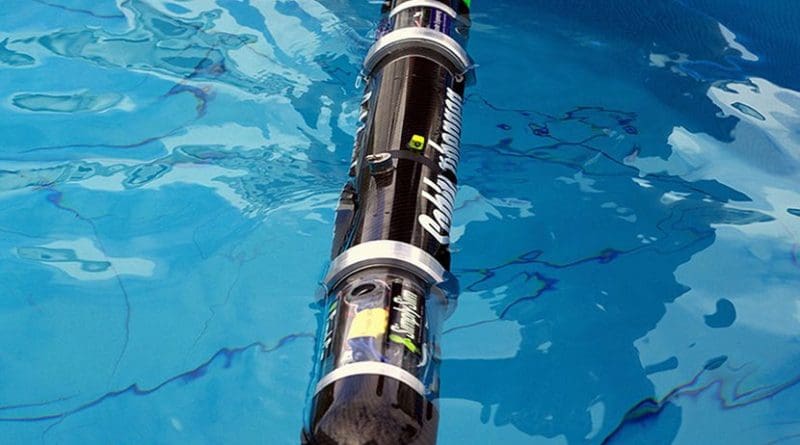India On Quest For Undersea Dominance To Counter Chinese Navy’s Growing Presence – Analysis
By Observer Research Foundation
As China and the US pursue development of unmanned underwater drones, the Indian navy is also adjusting its strategy to include autonomous vehicles in its armoury against China’s growing undersea footprint in the Indian Ocean
By Abhijit Singh
Undersea warfare has come to the surface after the South China Morning Post reported on Beijing’s development of giant, smart, cheap unmanned submarines. The “sea bots”, operated by artificial intelligence, are intended to perform tasks as diverse as reconnaissance, mine placement and making self-destructive attacks. They are now undergoing testing at a facility in Guangdong province, and will be part of a network of manned and unmanned assets tracking rival submarines in the world’s oceans.
China isn’t alone in its quest for undersea dominance. Last year, the United States commissioned its first-ever squadron of unmanned underwater vehicles, or drones, and contracted top defence firms to produce a new generation of such machines. It aims to enhance its combat potential, including in anti-submarine, mine clearance and even counter-underwater drone operations.
Deep-sea drones are not exactly new, but have recently come to the fore as potential replacements for conventional submarines. Military experts say a technological revolution in undersea warfare is making the maritime environment increasingly transparent. Lower frequency active sonar and non-acoustic detection methods are making it hard for submarines to hide by keeping quiet.
To be sure, the consensus on unmanned vehicles isn’t universal. Traditionalists are sceptical of unmanned vehicles, which do not yet have combat capability. They say nuclear attack submarines and diesel-electric vessels remain indispensable in underwater warfare. Faster and quieter, the latest submarines have higher endurance, significant energy generation capacity and advanced sensors; they are more able to intervene decisively in contested waters.
Yet, for other navalists, conventional submarines are anachronisms. Given the development of undersea platforms to hunt down attack submarines, the idea of sending manned submarines into hostile spaces is woefully out of date, to say the least.
A better solution would be a manned mother submarine – think underwater aircraft carrier – that could deploy swarms of drones and keep uniformed personnel out of the theatre of active conflict. Deployed in large numbers, sea bots could overwhelm the enemy’s systems and sensors, and undermine the adversary’s submarines.
It’s not only powerful navies that are pursuing undersea automation. The Indian navy has embarked on a search for mini drones equipped with passive sonar devices. At the naval commanders’ conference this year, senior officials made a strong case for futuristic technologies, after which the navy began to procure “high endurance autonomous underwater vehicles” for anti-submarine and intelligence roles.
Apparently, the plan is to acquire the platform from a global supplier, then mass-produce the equipment locally as part of the “Make in India” programme.
The Indian navy admits its anti-submarine initiatives are driven by the need to counter the Chinese navy’s growing undersea footprint in the Indian Ocean. Naval planners in New Delhi worry that China’s submarine deployments in South Asia might erode India’s influence in the near seas.
But even something seemingly benign, like Chinese marine observatories in South Asia that ostensibly monitor the undersea environment, might presage a larger assault on Indian interests.
China’s plan to construct an “Underwater Great Wall” of seabed sensors only confirms India’s fears. The Chinese navy’s positioning of long-endurance drones, like the Qianlong III and Haiyan in the South China Sea, might be a precursor to the deployment of similar platforms in the eastern Indian Ocean.
More worrying is the absence of globally accepted norms for the use of unmanned vehicles in overlapping exclusive economic zones and contested waters, amply illustrated by China’s seizure of a US underwater drone in the South China Sea in December 2016.
Inevitably, Indian maritime strategy in the South Asian seas will require both manned and unmanned underwater assets. For future maritime operations, Indian planners will need to navigate between three competing imperatives: passive surveillance in regional seas, the use of unmanned vehicles to track and pursue potential targets, and active communication with the mothership. Only an optimised strategy can expand India’s reach in the region.
The success of India’s unmanned underwater vehicle programme will depend on effective management practices. While maritime planners are likely to focus on greater surveillance – how to generate and relay an accurate underwater picture of the commons – it is equally important to prevent an accidental disclosure of the location details of manned assets.
In particular, naval engineers need to ensure a surveillance drone doesn’t mistakenly illuminate the mothership, leaving it vulnerable to enemy strikes.
For New Delhi, procuring naval drones may also make economic sense. While development costs are high now, drones will eventually be cheaper to deploy and maintain than conventional submarines. With their ability to carry out complex missions with minimal investment, drones will be a game changer.
So it should only be a matter of time before unmanned undersea vehicles are added to the Indian navy’s array of assets to counter China’s encroachment on India’s strategic space in South Asia.
This article originally appeared in South China Morning Post.

